Shikomi tanku・shikomi oke・hakkō tanku・moromi tanku
- 【English】
- Mashing tank; mashing vat; fermentation tank; moromi tank
- 【Japanese】
- 仕込タンク・仕込桶・発酵タンク・醪タンク
The vessel used for mashing moromi may be called by any of the terms above. Although most are cylindrical, square or rectagonal tanks also exist. The upper part may be completely open, or taper to a small opening with a manhole. (The open kind are known as kaiho (long “o”, 開放) tanks, and the latter kind as mippei (密閉, “sealed”) tanks.)
In the days when wooden tanks (oke, 桶) were used, the so-called “large” or “parent” tanks (o (long “o”)-oke 大桶, or oya-oke 親桶) were in the 4 – 6kl range. Contemporary tanks are steel with enamel, glass or stainless-steel linings, and have become progressively bigger. The 10 – 90kl range is most common, but extremely large tanks (more than 200kl) are also in use.
Tanks with temperature-control equipment are also common. Methods of cooling include external jackets, internal cooling and showers (water cooling). Metal tanks with external jackets have a double-layered construction for part of the external wall, through which cold water is circulated.
Internal cooling sees pipes or coils placed into the mash to cool it from within. There are also tanks fitted with rotating cooling fins through which chilled water is pumped.
The shower method uses pipes with numerous small holes placed near the upper manhole. Water sprinkles from the holes to cool the tank from the outside.
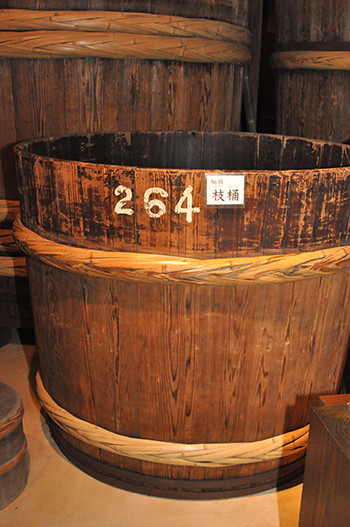
eda oke
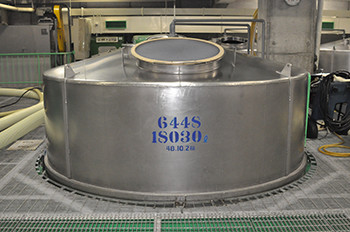
hakko tanku1
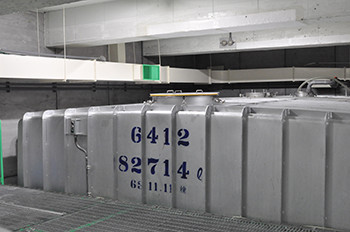
hakko tanku2
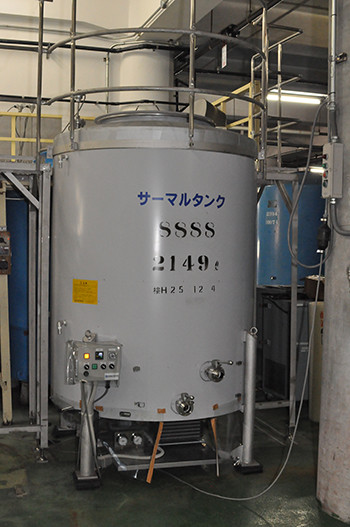
hakko tanku3
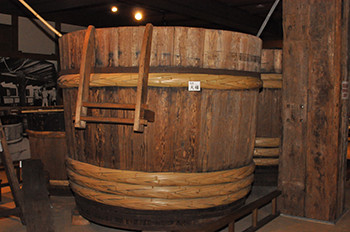
shikomi oke1
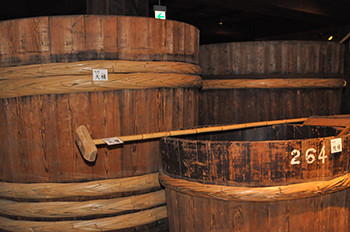
shikomi oke2

